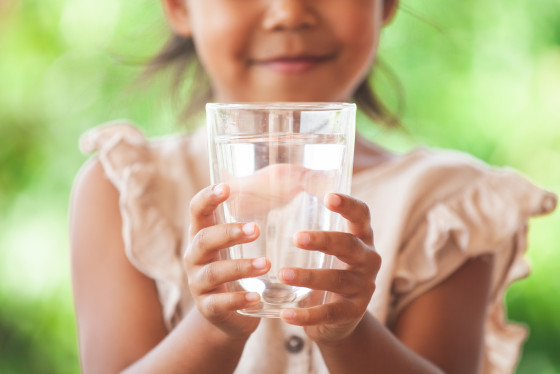DNR Celebrates 50th Anniversary Of Safe Drinking Water Act | Wisconsin DNR


MADISON, Wis. – Wisconsin Department of Natural Resources Celebrates 50th Anniversary of the Safe Drinking Water Act

The Wisconsin Department of Natural Resources (DNR) joins the nation in celebrating the 50th anniversary of the Safe Drinking Water Act, landmark legislation protecting public health and safeguarding our nation’s drinking water.
Since its passage in 1974, the Act has ensured that communities nationwide have access to clean, safe drinking water. On a state level, the DNR has worked tirelessly to implement and enforce the act, resulting in:
- Consistent compliance rates above 99% for community water systems, demonstrating Wisconsin’s commitment to providing safe drinking water.
- Reduction of contaminants like nitrate, radium, cryptosporidium and over 90 other contaminants in drinking water that often affect vulnerable populations.
- Protection of groundwater resources through robust well-construction standards, ensuring the long-term sustainability of Wisconsin’s aquifers.
- Staying ahead of the curve in safeguarding public health by collaborating with local governments and water utilities to address emerging contaminants like per- and polyfluoroalkyl substances (PFAS).
- Investment in water infrastructure, including funding for water system upgrades and lead service line replacements, to ensure the continued safety and reliability of our drinking water.
Commitment to Safe Drinking Water
“Wisconsin has a proud history of prioritizing clean drinking water, and the Safe Drinking Water Act has been instrumental in our efforts,” said DNR Deputy Secretary Steven Little. “As we celebrate this anniversary, we reaffirm our commitment to ensuring every Wisconsinite has access to safe drinking water.”
Leading the Way in Water Protection
Wisconsin has emerged as a national leader in protecting its water resources with proactive measures that set a high standard for other states to follow. The DNR will continue to work with stakeholders to address evolving challenges and protect Wisconsin’s precious water resources for future generations.
Accessing Water Data
The Safe Drinking Water Act makes water data public. Visit the DNR’s drinking water webpage for local data and to learn how to get your private well tested.
SDGs, Targets, and Indicators
| SDGs | Targets | Indicators |
|---|---|---|
| SDG 6: Clean Water and Sanitation | 6.1 By 2030, achieve universal and equitable access to safe and affordable drinking water for all | Consistent compliance rates above 99% for community water systems |
| SDG 6: Clean Water and Sanitation | 6.3 By 2030, improve water quality by reducing pollution, eliminating dumping and minimizing release of hazardous chemicals and materials, halving the proportion of untreated wastewater and substantially increasing recycling and safe reuse globally | Reduction of contaminants like nitrate, radium, cryptosporidium, and over 90 other contaminants in drinking water |
| SDG 6: Clean Water and Sanitation | 6.4 By 2030, substantially increase water-use efficiency across all sectors and ensure sustainable withdrawals and supply of freshwater to address water scarcity and substantially reduce the number of people suffering from water scarcity | Protection of groundwater resources through robust well-construction standards |
| SDG 6: Clean Water and Sanitation | 6.5 By 2030, implement integrated water resources management at all levels, including through transboundary cooperation as appropriate | Collaboration with local governments and water utilities to address emerging contaminants like per- and polyfluoroalkyl substances (PFAS) |
| SDG 6: Clean Water and Sanitation | 6.A By 2030, expand international cooperation and capacity-building support to developing countries in water- and sanitation-related activities and programs, including water harvesting, desalination, water efficiency, wastewater treatment, recycling, and reuse technologies | Investment in water infrastructure, including funding for water system upgrades and lead service line replacements |
1. Which SDGs are addressed or connected to the issues highlighted in the article?
The SDGs addressed or connected to the issues highlighted in the article are SDG 6: Clean Water and Sanitation.
2. What specific targets under those SDGs can be identified based on the article’s content?
The specific targets under SDG 6 that can be identified based on the article’s content are:
– Target 6.1: Achieve universal and equitable access to safe and affordable drinking water for all by 2030.
– Target 6.3: Improve water quality by reducing pollution, eliminating dumping, and minimizing the release of hazardous chemicals and materials, halving the proportion of untreated wastewater, and substantially increasing recycling and safe reuse globally by 2030.
– Target 6.4: Substantially increase water-use efficiency across all sectors and ensure sustainable withdrawals and supply of freshwater to address water scarcity and substantially reduce the number of people suffering from water scarcity by 2030.
– Target 6.5: Implement integrated water resources management at all levels, including through transboundary cooperation as appropriate by 2030.
– Target 6.A: Expand international cooperation and capacity-building support to developing countries in water- and sanitation-related activities and programs, including water harvesting, desalination, water efficiency, wastewater treatment, recycling, and reuse technologies by 2030.
3. Are there any indicators mentioned or implied in the article that can be used to measure progress towards the identified targets?
Yes, there are indicators mentioned or implied in the article that can be used to measure progress towards the identified targets. These indicators include:
– Consistent compliance rates above 99% for community water systems (Target 6.1)
– Reduction of contaminants like nitrate, radium, cryptosporidium, and over 90 other contaminants in drinking water (Target 6.3)
– Protection of groundwater resources through robust well-construction standards (Target 6.4)
– Collaboration with local governments and water utilities to address emerging contaminants like per- and polyfluoroalkyl substances (PFAS) (Target 6.5)
– Investment in water infrastructure, including funding for water system upgrades and lead service line replacements (Target 6.A)
These indicators demonstrate progress towards the targets by showcasing the achievements in ensuring safe and affordable drinking water, improving water quality, promoting water-use efficiency, implementing integrated water resources management, and providing support to developing countries in water-related activities.
4. SDGs, Targets, and Indicators
| SDGs | Targets | Indicators |
|---|---|---|
| SDG 6: Clean Water and Sanitation | 6.1 By 2030, achieve universal and equitable access to safe and affordable drinking water for all | Consistent compliance rates above 99% for community water systems |
| SDG 6: Clean Water and Sanitation | 6.3 By 2030, improve water quality by reducing pollution, eliminating dumping and minimizing release of hazardous chemicals and materials, halving the proportion of untreated wastewater and substantially increasing recycling and safe reuse globally | Reduction of contaminants like nitrate, radium, cryptosporidium, and over 90 other contaminants in drinking water |
| SDG 6: Clean Water and Sanitation | 6.4 By 2030, substantially increase water-use efficiency across all sectors and ensure sustainable withdrawals and supply of freshwater to address water scarcity and substantially reduce the number of people suffering from water scarcity | Protection of groundwater resources through robust well-construction standards |
| SDG 6: Clean Water and Sanitation | 6.5 By 2030, implement integrated water resources management at all levels, including through transboundary cooperation as appropriate | Collaboration with local governments and water utilities to address emerging contaminants like per- and polyfluoroalkyl substances (PFAS) |
| SDG 6: Clean Water and Sanitation | 6.A By 2030, expand international cooperation and capacity-building support to developing countries in water- and sanitation-related activities and programs, including water harvesting, desalination, water efficiency, wastewater treatment, recycling, and reuse technologies | Investment in water infrastructure, including funding for water system upgrades and lead service line replacements |
Source: dnr.wisconsin.gov








